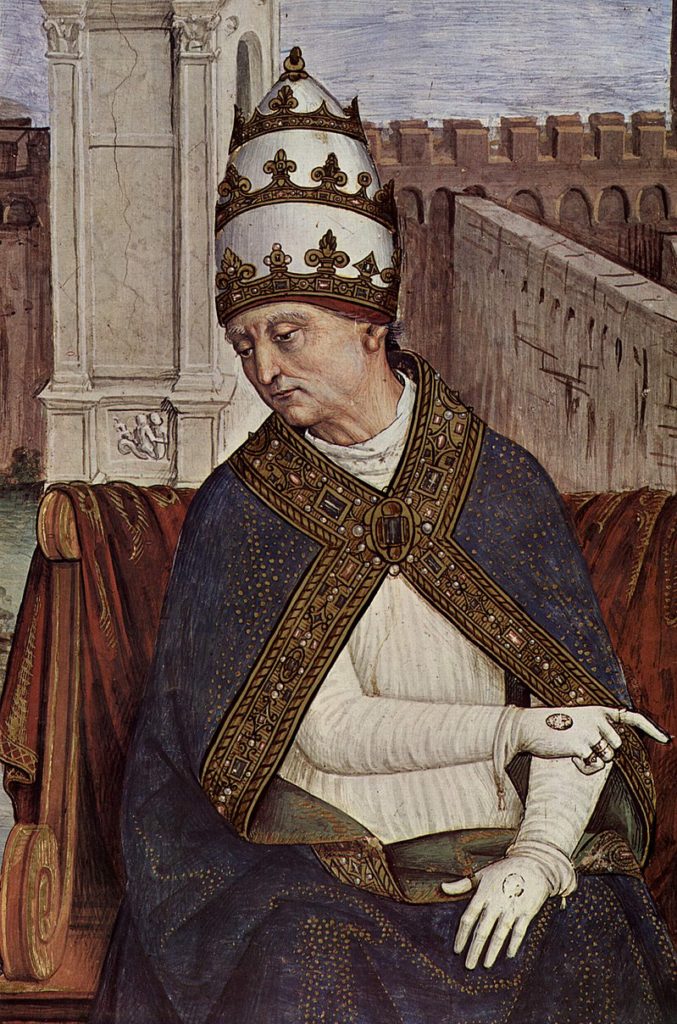Rome from Cola di Rienzo to Pius II
Once known as caput mundi, “capital of the world”, Rome fell into decay after the fall of the western Roman Empire. Rome was reborn as the capital of Christendom during the Middle Ages.
Pope Liberius is portrayed here clearing the ground for the building of a basilica in the 4th century. This painting underscores the crucial role Renaissance popes had in rebuilding Rome.
Pope Martin V, who restored the Basilica of Santa Maria Maggiore, commissioned the painting in the 15th century.
Masolino da Panicale, The Founding of Santa Maria Maggiore, detail
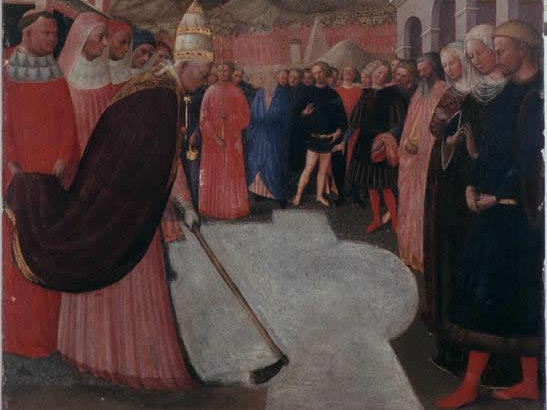
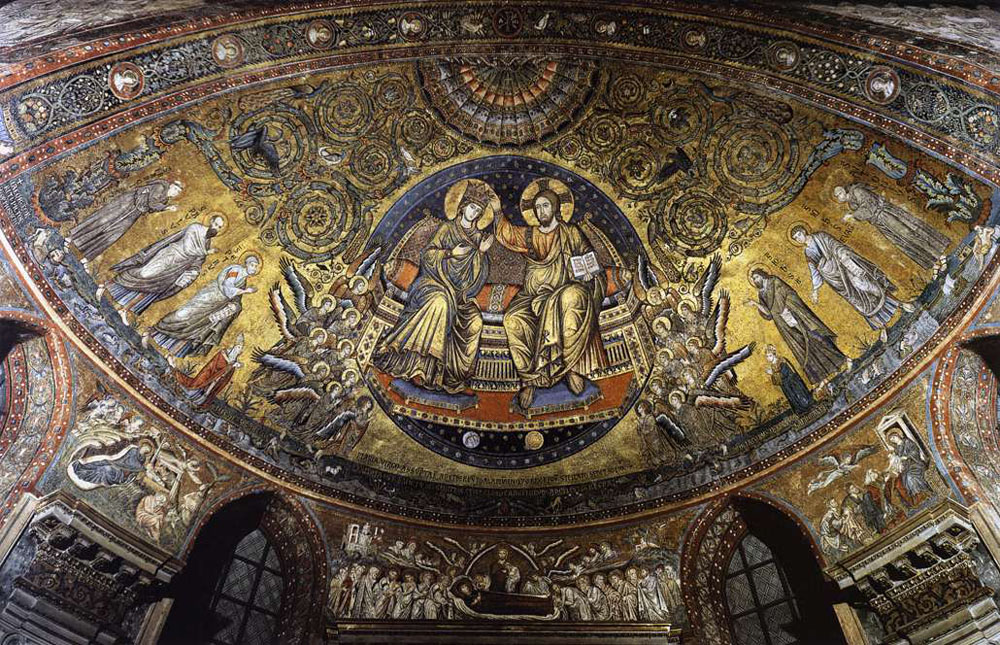
When Martin first was elected pope, both Rome and the papacy were in literal, as well as figurative, ruins.
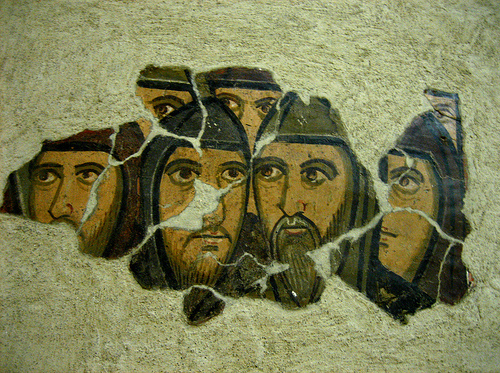
During the centuries after it had ceased to be the capital of the Ancient Roman Empire, the city of Rome had fallen into disrepair. The Forum was known as the Campo Vaccino or “cow pasture.”


The Roman commune was never as powerful as communes in other parts of Italy because of powerful local barons and the ever-present figure of the pope.
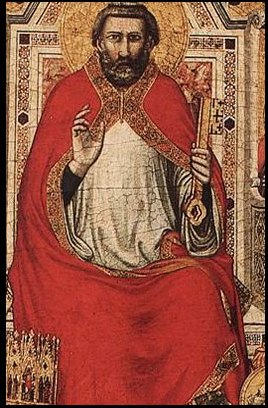
From the time of the Apostle Peter, Rome was the holy seat of the Bishop of Rome, who was called the Pope.
Giotto, St. Peter, Stefaneschi Altarpiece
When the Emperor Constantine converted to Christianity in the 4th century CE, he allegedly handed over immense power to the church, in the so-called “Donation of Constantine” (later discovered to be a forgery by Lorenzo Valla.)
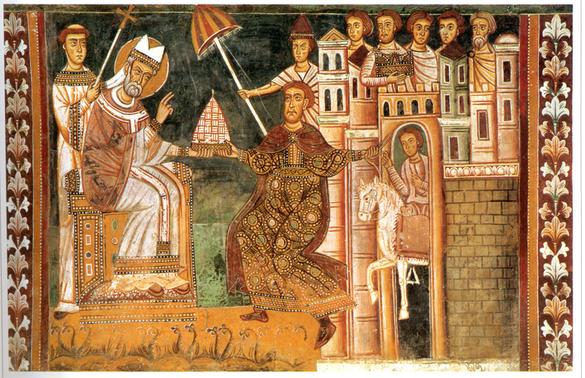
Boniface VIII was a forceful pope who believed papal power should be limitless.
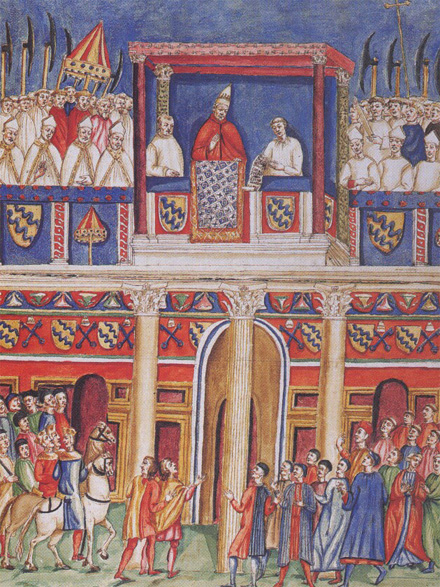
After the death of Boniface, the papacy left Rome and moved to Avignon.
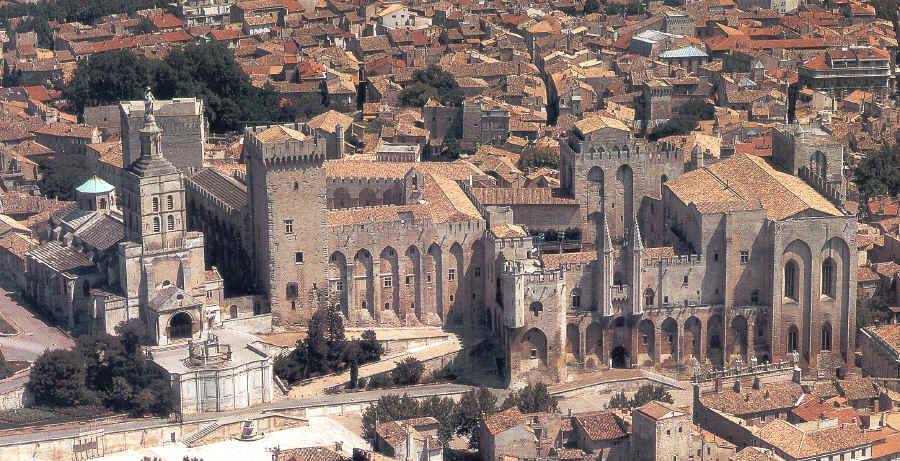
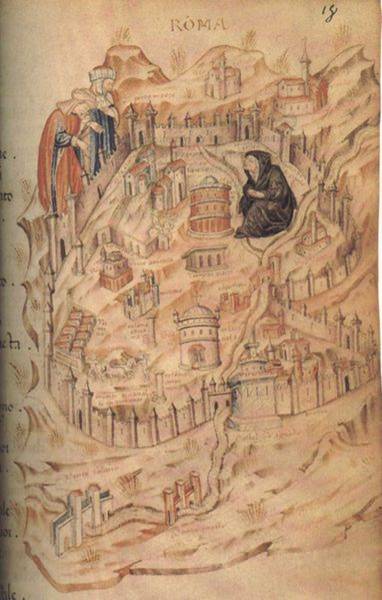
To many contemporaries, Rome seemed like a widow without the pope.
Once the popes returned to Rome they began restoring and rebuilding the city, making it again a “caput mundi.”
Eugenius IV commissioned a new door to St. Peter’s:
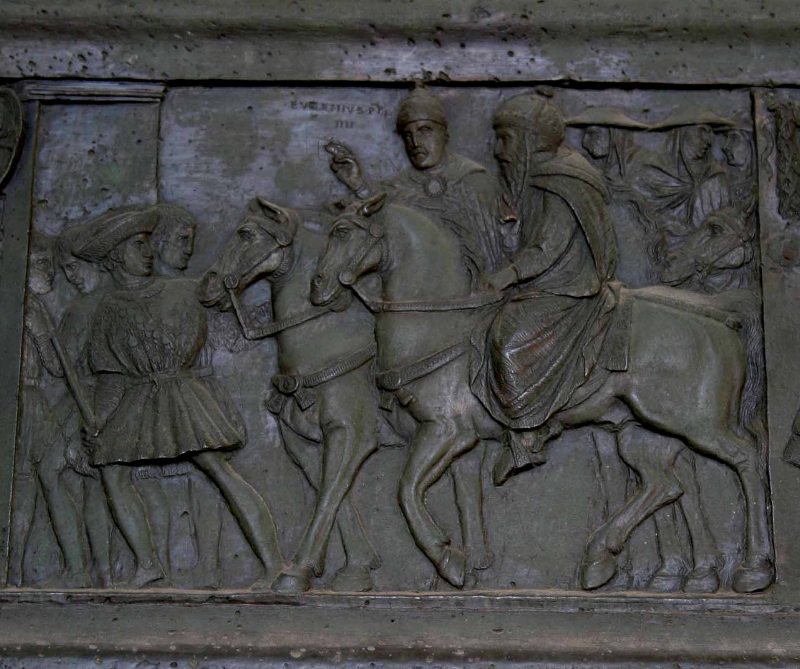
Here is a detail from another panel of Filarete’s door portraying the Martyrdom of St. Peter:
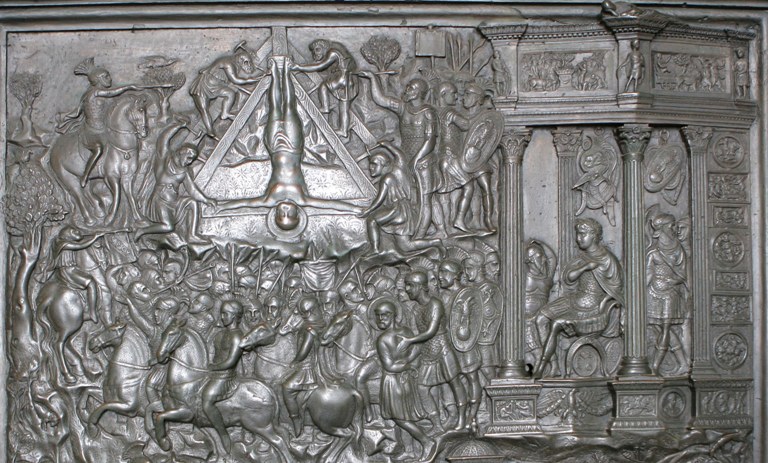
Filarete’s door was on the front of Old Saint Peter’s, later demolished by Pope Julius II in order to build the New St. Peter’s.
Here is an image that gives some idea of what the inside of the original basilica looked like.
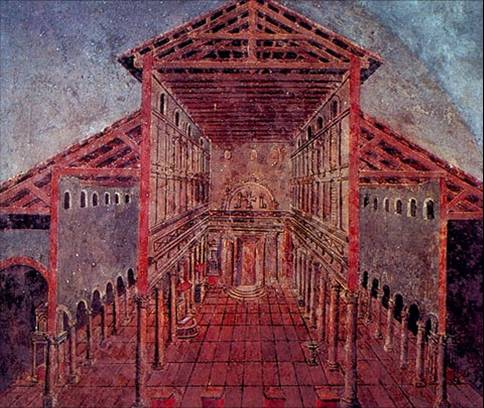
Below is a fresco in the Chapel of Nicholas V, who began many new building projects in Rome. It depicts an earlier pope giving money to St. Lawrence to distribute as charity.
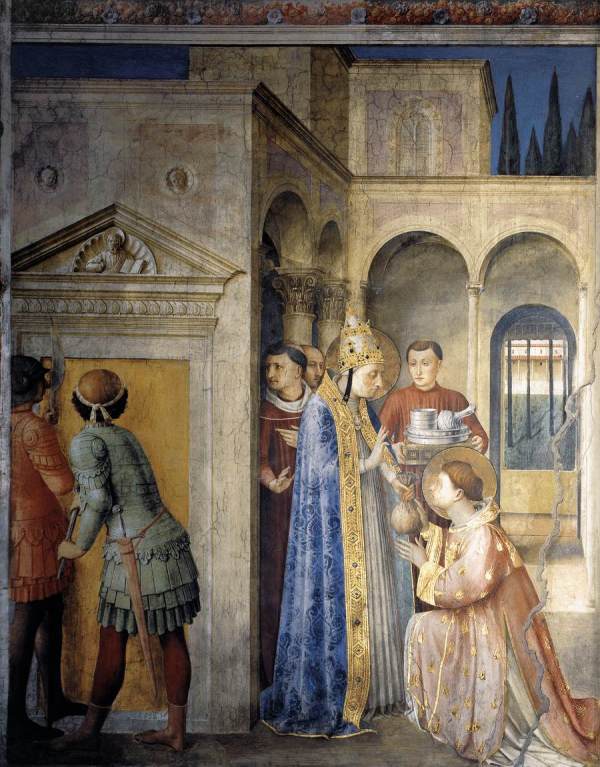
Pope Nicholas V was also friend and patron of Renaissance polymath Leon Battista Alberti
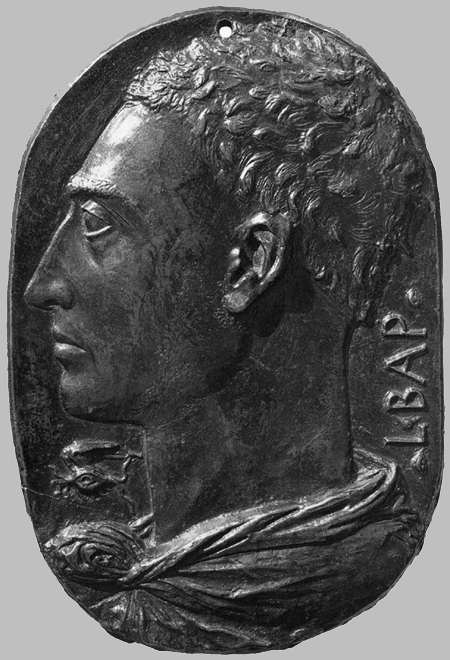
Alberti created buildings that are landmarks of Renaissance design
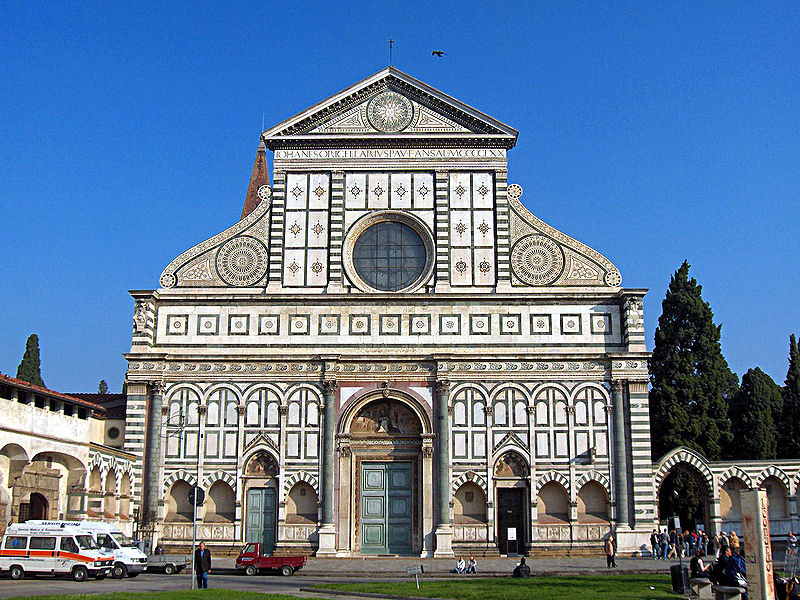
Scholars like Alberti found employment with Renaissance popes, many of whom were humanists themselves.
